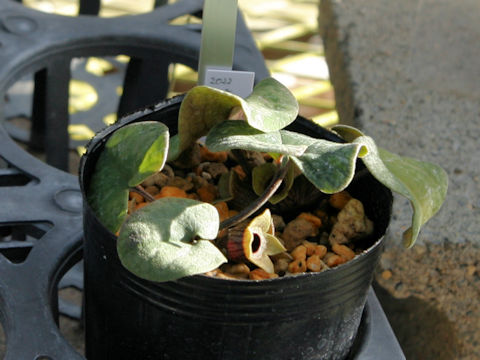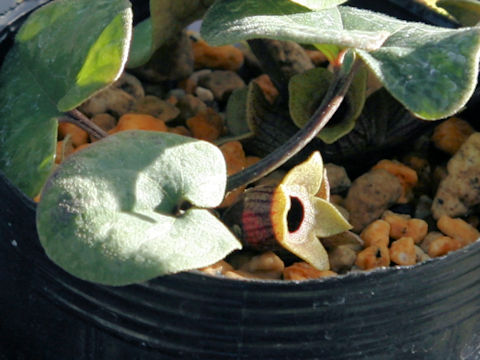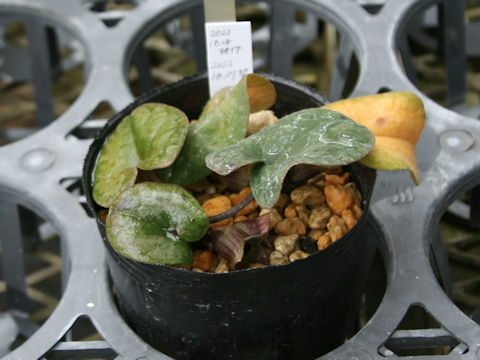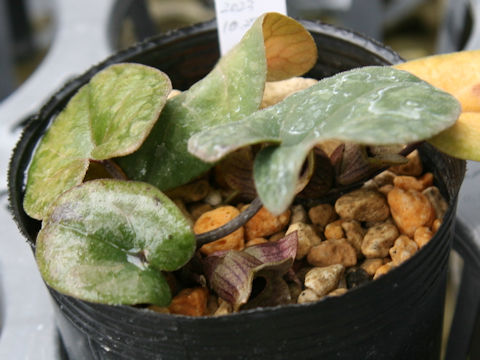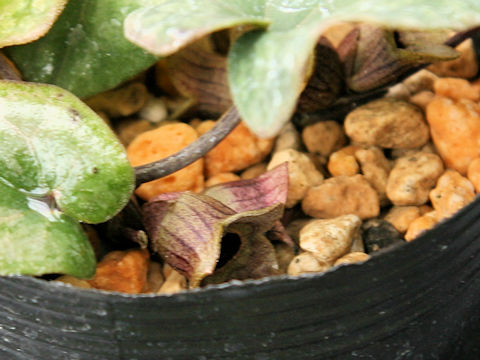
|
The "Zuso-kan-aoi" (Asarum savatieri ssp. pseudosavatieri var. pseudosavatieri) belongs to Aristolochiaceae (the Birthwort family). It is an evergreen perennial herb that is an endemic species of Japan, and is found in the central Izu Peninsula and western Tanzawa Mountains of Honshu. It grows on the forest floor of broad-leaved forests in mountainous areas, and grows to a height of around 10 cm. It is a subspecies based on the "Otome-aoi" as its elementary species. The leaves are ovate or triangular-ovate in shape, with a cordate base. The leaves are green and lack a sheen, and are covered in short hairs, often with cloud-like patterns. From October to November, brown or greenish-brown flowers bloom near the roots. The calyx tube is tubular and long, and does not constrict at the top. The calyx lobes are triangular-ovate in shape, and are shorter than the calyx tube. The Japanese name "zuso" is derived from the fact that it is distributed in the Izu (zu) and Sagami (so) regions. It is classified as a near-threatened species (NT) on the Red List.
|
